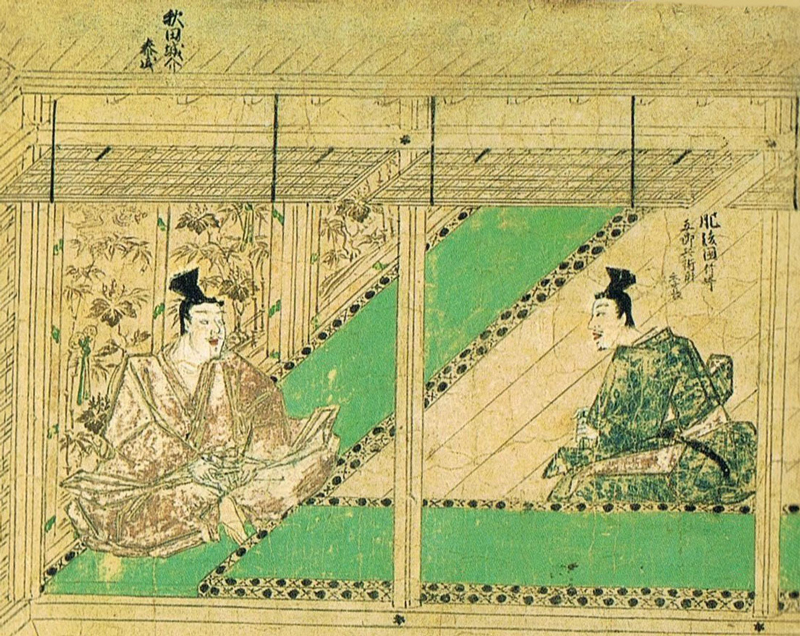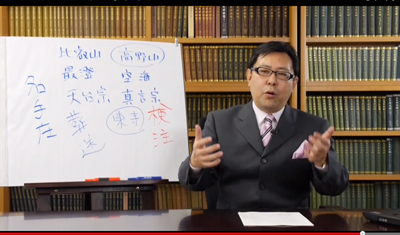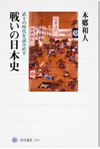Invitation to Science
I Do Not Aspire to be Like Adachi Yasumori: the Role of a Historical Communicator
Professor Kazuto Hongo, who specializes in research on the Japanese Middle Ages, says that he has reached the true meaning of what it means to be a “historical communicator” through his daily dealings with historical materials. As a historical communicator, Professor Hongo shoulders the vital role of explaining the various aspects of Japanese medieval history to the world in an easily understandable way, as well as bridging the gap between academia and society. Here, he writes about powerful samurai Adachi Yasumori's relationship with Taira no Yoritsuna during the Kamakura period as an illustrative example of the realities of historical communicators.

Moko Shurai Ekotoba (An Illustrated Narrative of the Mongolian Invasion), held in the Sannomaru Shozokan (The Museum of Imperial Collections). First scroll, picture 9. This scene, set after the Battle of Bun'ei, depicts samurai Takezaki Suenaga (right) recounting to Go-on Bugyo (Reward Issuance Commissioner) Adachi Yasumori (left) the deeds he accomplished as he fought at the front lines during battle. Adachi evaluated Takezaki highly for his fighting against the Mongolian Yuan army. It is said that Takezaki commissioned the creation of these scrolls with the intention of calming Adachi's spirit.
I am an artisan who works with Japanese historical materials. Thinking about it, I have constantly spent my life handling historical materials for 30 years now. I don't know whether to chalk it up to doing this mundane task for so long or if I was just born this way, but honestly speaking, my intellectual prowess is a bit dicey. I can't really grasp advanced theory, and I'm inept at comprehending implication-laden sentences. And it goes without saying that I'm becoming increasingly hopeless when it comes to writing and other similar pursuits.
That being said, I just can't sit back with my arms crossed and bemoan my lack of abilities. I gave a lot of serious thought to what someone like me could do, and eventually hit upon an existence known as the “historical communicator.” A historical communicator's role is to take the many aspects of history—in my case, Japanese medieval history—and explain them to the general population in a way that is easy to understand. As a bridge between academia and society, I thought to myself, wouldn't this be a role worth filling?
>In 1274 and again in 1281, the Mongolian Empire made attempts to invade Japan. Researching the law as it was written at the time, we see that the shogunate government repeatedly enacted and retracted the tokuseirei (an ordinance cancelling debts) for shogunal retainers (gokenin). The government's actions are a perfect example of the inconsistent and unstable policymaking of that period. Furthermore, in 1285, a massive internal conflict erupted within the shogunate. A group supporting Taira no Yoritsuna, the top vassal of the former Hojo Tokimune regency, attacked and overthrew Tokimune's father-in-law, the powerful gokenin Adachi Yasumori, and his allies.
How do we rearrange this situation in a simpler way to understand it better? I won't cite sources for the sake of brevity, the stance of the Taira side was that the “shogunate should act in the interests of the gokenin only.” The Adachi side, on the other hand, insisted that the shogunate should “consider the interests of not only the gokenin, but also the emerging warrior class and the common people.” That's how I interpret it. When the political conflict between the two parties escalated and Taira's side emerged as the victor, the tokuseirei would be reinstated, much to the relief of the gokenin. However, the side that did not receive the money they were owed due to the decree would eventually reach their breaking point. Those behind Adachi would then rally together to abolish the tokuseirei. Amid the constant uproar due to Mongolian invasions, the final outcome of this disorderly back-and-forth within the government saw the Adachi side being completely wiped out.

Professor Hongo teaching an online university-level course on gacco.
After this point, the government was reduced to simply acting as a representative for the interests of the outspoken gokenin, thereby provoking societal disdain and ultimately leading to the government's decline.
I believe the above explanation of the situation is sound and comprehensive, if I do say so myself. However, I can't really get anyone to discuss these kinds of things with me. The opposite of positively evaluating or agreeing with the hypotheses I try to discuss with others is not criticizing or disagreeing with the hypotheses, but indifference! I hate drinking alcohol, so I usually didn't go out with colleagues at night after work. As a result, I have few friends in academic circles. Is that why they won't discuss issues with me? Researchers are human, after all… Or if I were to make a conjecture about the roots of their disinterest, perhaps it's that they think historical events aren't simple enough to be perceived as dichotomies. Though I think that if you're bringing an argument to the table for discussion, it's best that the gist of the argument be presented clearly...
Considering such circumstances, I make it a point not to pay much attention to academia these days. I do my work without bothering myself about what others think of me. My job is as follows: first, I compile historical materials that can be used by everyone. Second, I utilize dichotomies as needed to formulate easily understandable explanations of historical issues. Third, I take these explanations of historical research outcomes and transmit them to society. For instance, I take part in teaching classes on an online course website called gacco (it's free!) and I make appearances in historical programs on television. For someone like me whose mental faculties are dubious at best, perhaps this kind of working style suits me better than constructing abstruse historical theory. That's what I'm thinking now, anyway.

Contributed by Kazuto Hongo
Professor, Historiographical Institute
https://www.hi.u-tokyo.ac.jp/personal/kazuto/index.html
 Book authored by Professor Hongo:
Book authored by Professor Hongo:
A Japanese History of Battles
(Tatakai no Nihonshi) (Published in November 2012 by Kadokawa Sensho; ¥1,728)




